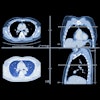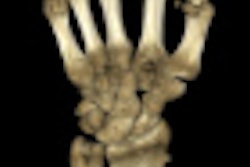Monday, November 29 | 3:10 p.m.-3:20 p.m. | SSE12-02 | Room S102D
In this scientific session, Michigan researchers will discuss how educating radiologists about workup guidelines for suspected pulmonary embolus doesn't necessarily curb overutilization rates for CT pulmonary angiography (CTPA) in the emergency room.Yassine Kanaan, MD, and colleagues from the University of Michigan Health Systems in Ann Arbor will present work they conducted using data from 100 consecutive CT pulmonary angiograms that had been ordered from the emergency department.
The team determined the appropriateness rates for these studies (using Wells clinical decision rules and clinical society recommendations), then gave referring physicians a formal lecture that outlined the guidelines. The group calculated appropriateness rates for another 100 consecutive CTPA exams a month later.
At the first analysis, 1% of patients had Wells scores performed, 33% had D-dimer testing, and no patients had ventilation/perfusion (V/Q) studies prior to CT. Five percent of CTPA studies were positive for venous thromboembolism; appropriateness rates for CTPA were 0%.
In the analysis performed after the lecture, no patients had Wells scores performed, 32% had D-dimer, and no patients had V/Q studies. Nine percent of CTPA studies were positive for venous thromboembolism; even on this second analysis, appropriateness rates for CTPA were 0%.
Although education didn't affect the utilization appropriateness rates for CTPA, the percentage of positive cases did increase, the team found, which may indicate that there were better matches between patients and the procedure. But having information about CTPA guidelines was insufficient to increase appropriate utilization for the procedure in the emergency department, the group concluded.





















